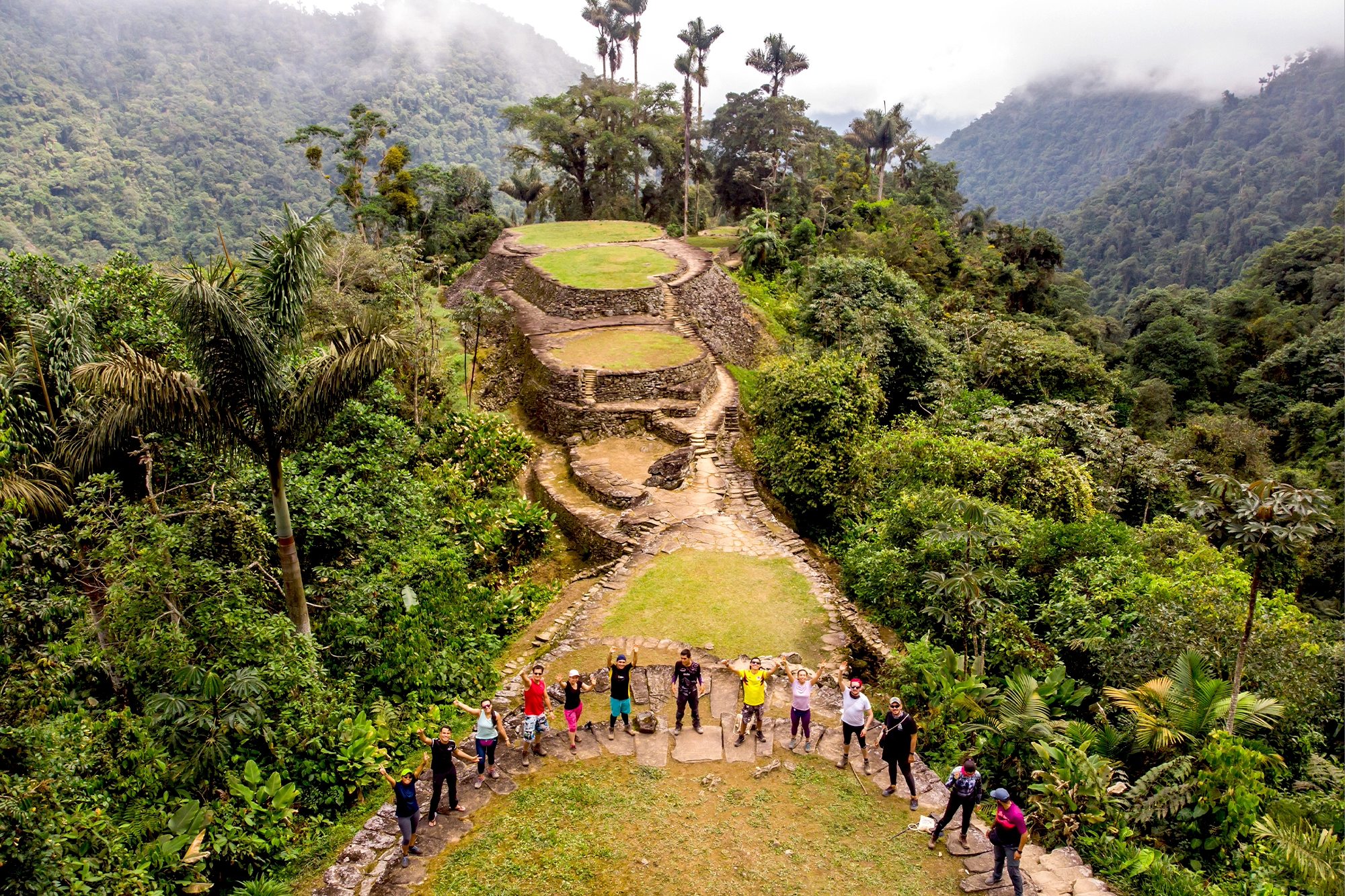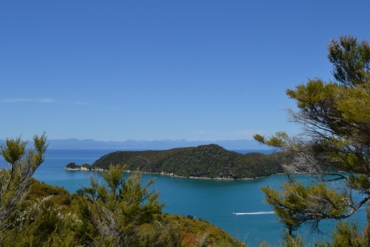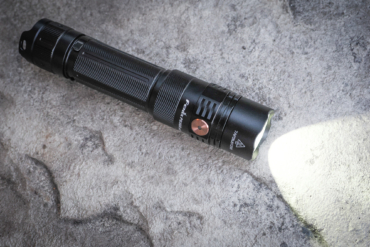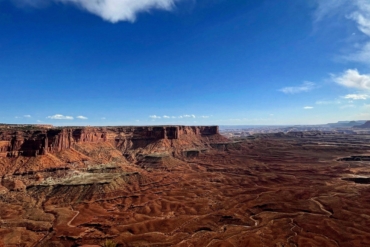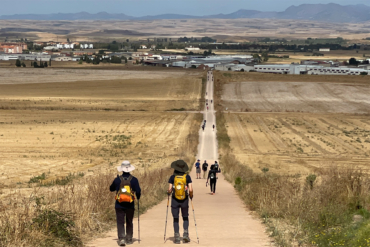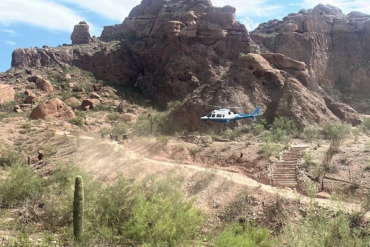“Let’s take the scenic route,” our guide announced to the group. We had only been on the trail to the Ciudad Perdida for about an hour, and we were already veering off course. He led us to a special swimming spot.
I was already drenched in sweat by the tropical forest of the Sierra Nevada de Santa Marta, the highest coastal mountain range in the world. The 10-foot jump into the deep bend in the river was a welcome reprieve.
Our guide had been worried that the passing Hurricane Beryl would make swimming during our 4-day, 3-night trek to the top of the mountain too dangerous. He wanted to make sure our group got at least one chance to swim as we hiked to the 1,400-year-old archaeological site hidden deep in the jungle. Often compared to Machu Picchu, Ciudad Perdida is well off the beaten path and visited by far fewer people
My family and I had traveled to Colombia to hike over 37 miles and 3,600 feet of elevation to reach this “Lost City.” I first heard about Ciudad Perdida from a friend who had done this trek 2 years earlier with her family. Frankly, she made it sound pretty miserable — wet, muddy, buggy, humid, and challenging.
Despite her warnings, though, I was inspired by the idea. Machu Picchu had always sounded alluring. But Ciudad Perdida is far less trafficked, offering all the mystery and none of the crowds. The four indigenous groups that manage the site strictly enforce the daily visitor count of 250 people. And unlike Machu Picchu, there is no tourist train or luxury hotel at Ciudad Perdida.
When I started looking into it, there was very little information online, though. There were forum threads and travel blogs that poorly described it and gave some limited information. But there was no real, comprehensive guide about what to expect, how to get there, and what I’d need to bring. There seemed to be a gaping hole where a guide for this adventure should exist — so I decided to write one.
Below, you’ll find all the details to plan your own Ciudad Perdida trek: Where to go, how to book it, the gear you’ll need, an itinerary, and more.
What to Expect on the Ciudad Perdida Trek
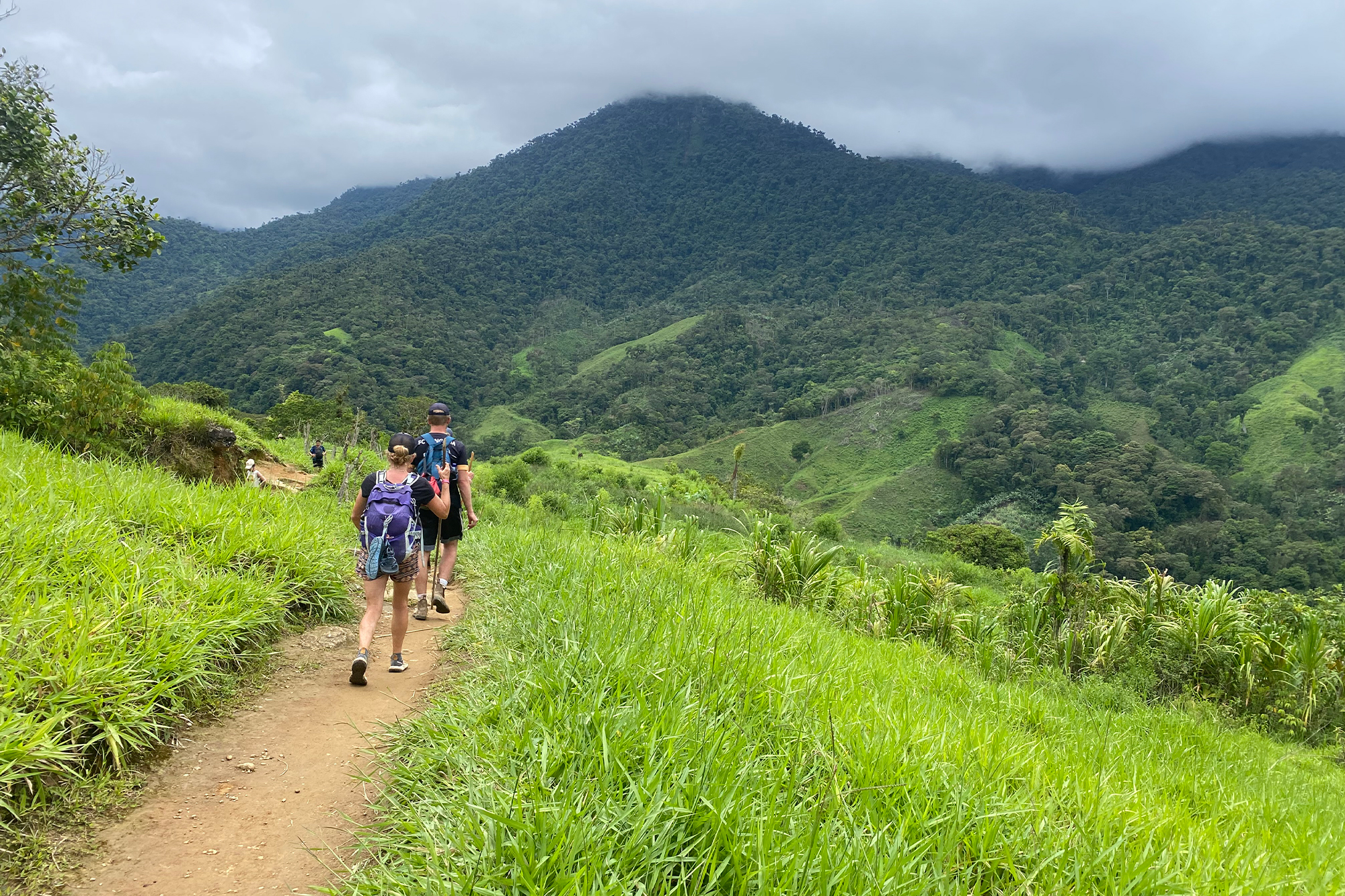
The archaeological site of Ciudad Perdida is the last vestiges of the Tayrona civilization and is marked by circular stone mosaic platforms that once held the foundations of their homes, ceremonial and feasting areas, stone paths, canals, storehouses and staircases.
It was built around 700 A.D. and was actively used until the Tayrona people mysteriously disappeared in the 1600s. The site lay untouched until the 1970s, when tomb raiders found gold and ceramics, and their plunder started popping up on the black market.
The appearance of these treasures led Colombian officials to rediscover the site and unearth the stone masonry hidden by 400 years of overgrown jungle vegetation. Still, it remained mostly untouched due to the following decades of violent drug conflict. When the FARC Treaty was signed in 2016, the end of the drug war made the area safer for locals and tourists alike. As a result, the Ciudad Perdida trek’s popularity exploded.
The Colombian government and conservation allies now work with the local indigenous communities so they can preserve Ciudad Perdida as a sustainable adventure tourism destination.
Tour Companies & Booking
Seven tour companies hold the license to guide hikers through the humid tropical forests to Ciudad Perdida. We used Teyuna Tours, a cooperative tour agency run by 14 veteran Ciudad Perdida guides who have extensive knowledge of the terrain and the archaeological site’s history. They employ 25 guides, 10 interpreters, and 18 chefs.
The other six companies are as follows:
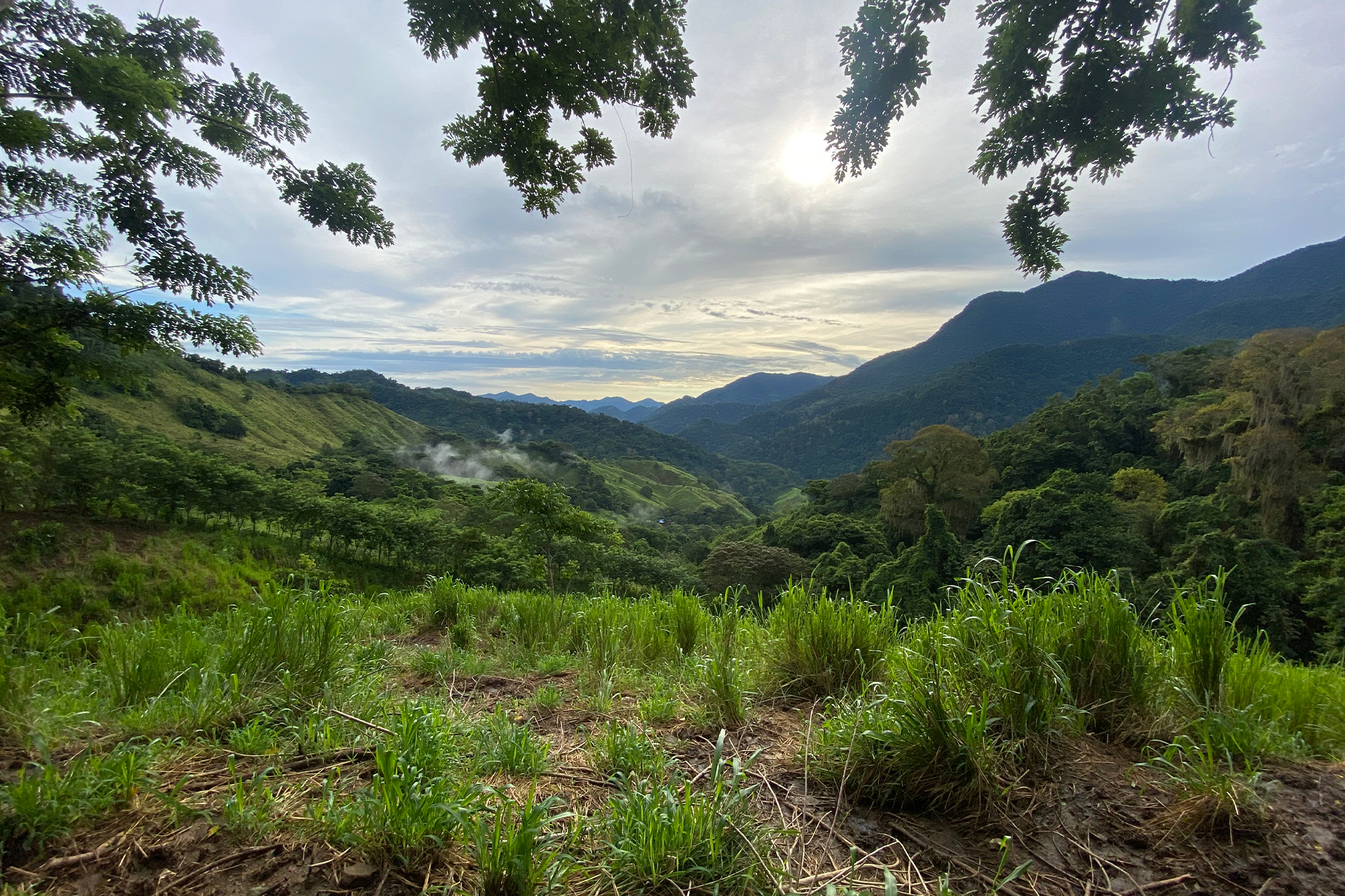
Only one company, Wiwa Tours, is run exclusively by indigenous guides. Wiwa Tours, like all the others, uses the same camps, trails, and rest stops.
Booking with any of these tour companies is fairly simple. On their websites, they list different options for different treks. Simply select the one you want, enter the dates you’d like to trek, and book your spot. There may be a small booking fee. Our trip cost us $2,150,000 Colombian pesos (about $533) each. The price included guides, lodging, food, and entrance into the Ciudad Perdida archaeological site.
That is pretty standard between the seven outfitters, though prices may vary by $50-100. Some of the guide services offer longer, more extensive trips that are costlier.
By far, the most popular Ciudad Perdida trek is the 4-day, 3-night version. The only reason to choose the longer tour would be if you wanted to spend more time in the tropical wet forest. Three nights was plenty of time for me to experience the oppressive humidity and the merry bands of mosquitos.
Pre-Trip Practicalities
Ciudad Perdida trekkers will need to spend the night in Santa Marta prior to the trek. The trekking companies will pick participants up at their hotels and bring them back at the end of the trek.
Teyuna Tours stored our extra luggage while we were on the hike. Other hikers left their extra belongings in the storage holds at their hotels.
We had elected to fly out from Santa Marta to Medellin the evening after the trek. We almost didn’t make our flight, due to the van busting its radiator while crossing a river driving from the town of El Mamey to the highway. While I was grateful to arrive in Medellin that evening, it was stressful to go from the mountains to the airport to the city all in the same day. So if you have the time, give yourself a buffer day so you aren’t rushed.
Recommended Gear: What to Bring on the Ciudad Perdida Trek
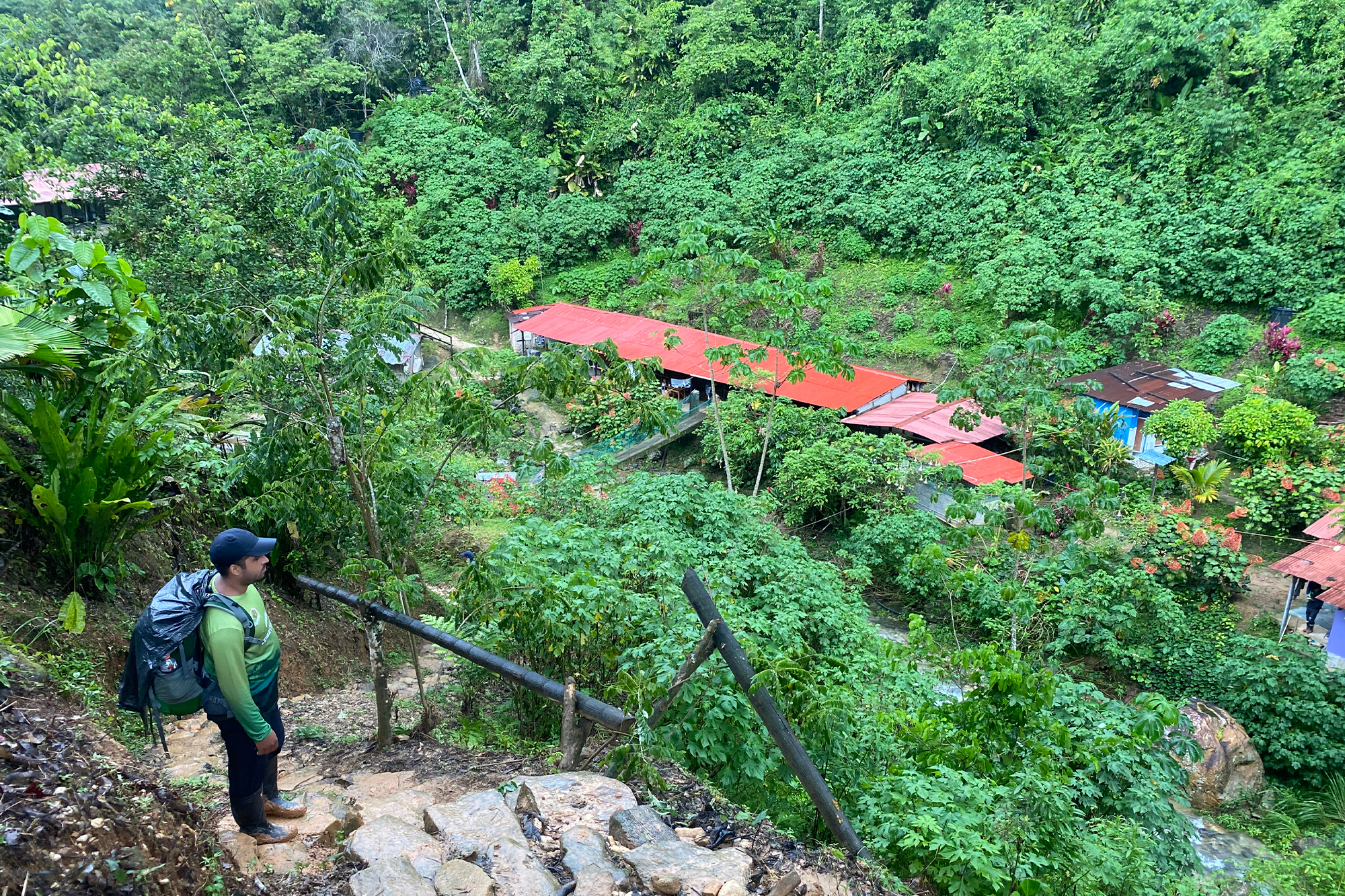
The great thing about a supported Ciudad Perdida trek is that hikers only have to carry their own water, clothing, and immediate essentials. There’s no need to carry your sleep system, a tent, or days’ worth of food. The guiding companies provide all of that.
That said, whenever you hit the trail, you should keep the 10 Essentials in your pack. The Ciudad Perdida trek does travel through some pretty remote areas. And while the guides carry big packs with emergency supplies, it never hurts to be prepared yourself.
Below is GearJunkie’s list of the 10 Essentials for Hiking. Make sure your day-to-day kit includes all of them.
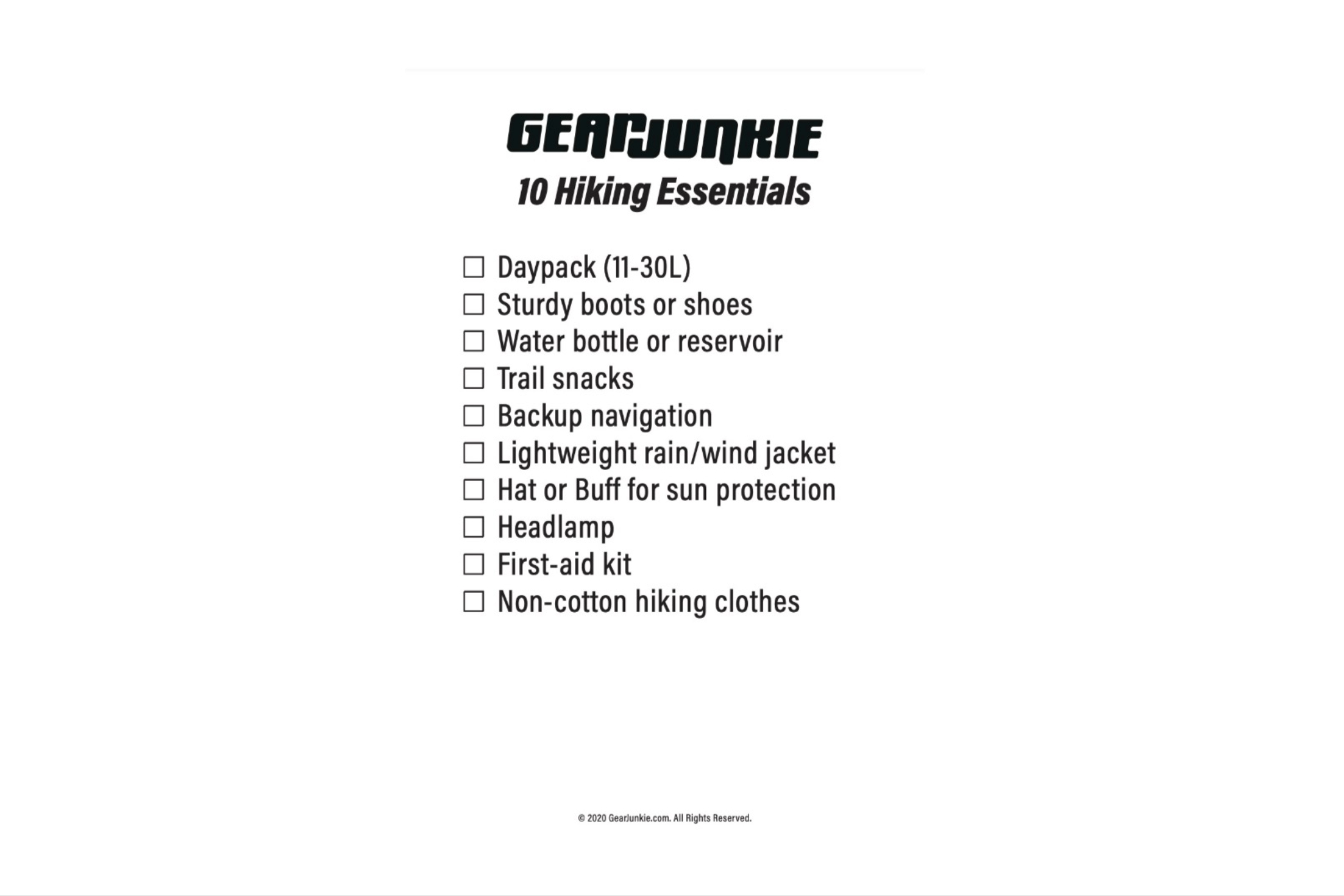
I’d also recommend having a change of hiking clothes for every day. Things don’t dry out very well in Colombia’s humid jungle climate. You’ll be grateful to get away from your rain and sweat-soaked garments.
Here are my other personal recommendations from the experience.
Clothes
- Hiking socks
- Long-sleeve hiking shirts (merino wool or synthetic materials only — my favorite is the Helly Hansen Durawool T-Shirt)
- Hiking pants (Beyond Clothing Sojourn Lightweight Joggers are my go-to travel and hiking pants)
- Camp clothing (lounge clothes for evenings and nighttime; preferably long-sleeved because of bugs)
- Rain jacket (I used the Helly Hansen Verglas Fastpack Rain Jacket)
- Midlayer (Note: it rarely gets below 70 degrees in this area, even at the coldest time of year)
- Swimsuit
Pro tip: Leave a clean change of clothes for yourself in the bag you leave behind. That way, when you return, you’ll have fresh, clean clothes waiting for you.
Footwear
- Sandals (for river crossings and evenings at camp, I had my Chaco Cloud Z Sandals)
- Camp shoes or slippers (unnecessary if you also bring sandals)
- Hiking boots or hiking shoes (I used Helly Hansen Falcon Trail Running Shoes)
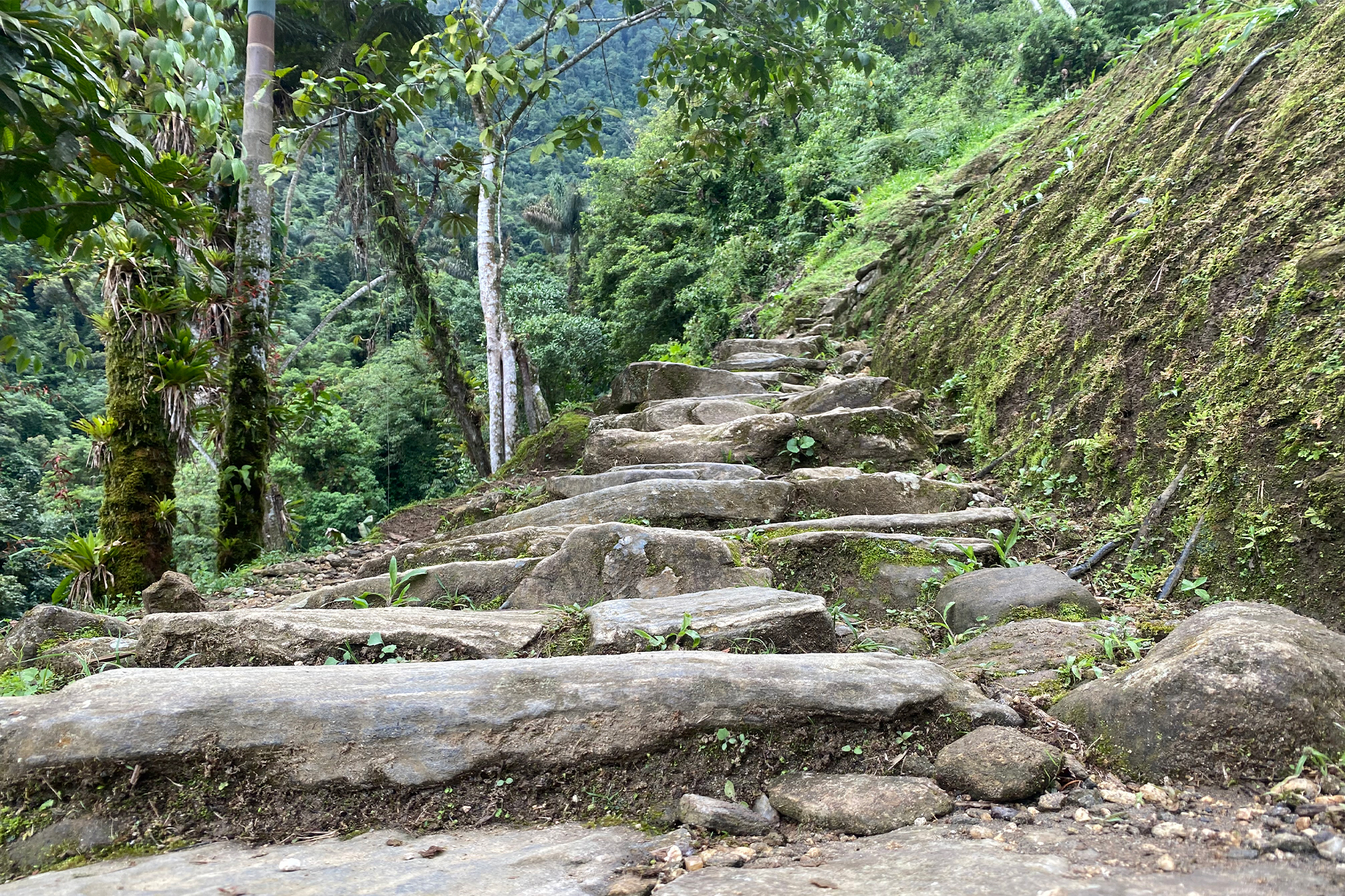
Gear
- Dayback (I used an Osprey Downburst 24 L Pack)
- Backpack rain cover (we had Osprey Hi-Vis Raincovers)
- Flashlight or headlamp
- Hiking poles: Hiking poles are not allowed in carry-on luggage, and I never check a bag. Hikers can rent poles from the tour company, if needed. Our guide also carried a machete and, in about 45 seconds, could fashion a nice hiking stick.
- Water filtration system (I used a Grayl GeoPress Water Bottle): This was extra protection to filter the water already filtered by the tour company. I filtered all the water we drank and also used to brush our teeth. Although each camp along the Ciudad Perdida trail has a water filtration system, I didn’t want to take a chance of getting a stomach ache while hiking.
Personal Items & Accessories
- Quick-dry towel
- Toiletries
- Mosquito repellant (absolutely necessary — I brought 100% DEET, but Nopikex was a local brand)
- Mosquito net (if you’re really concerned about the bugs)
- Book
- Playing cards
- Extra money for snacks and beer
- Phone or camera (something for photos)
Pro tip: Bring your own toilet paper because the bathrooms often run out by early evening.
When to Hike to Ciudad Perdida
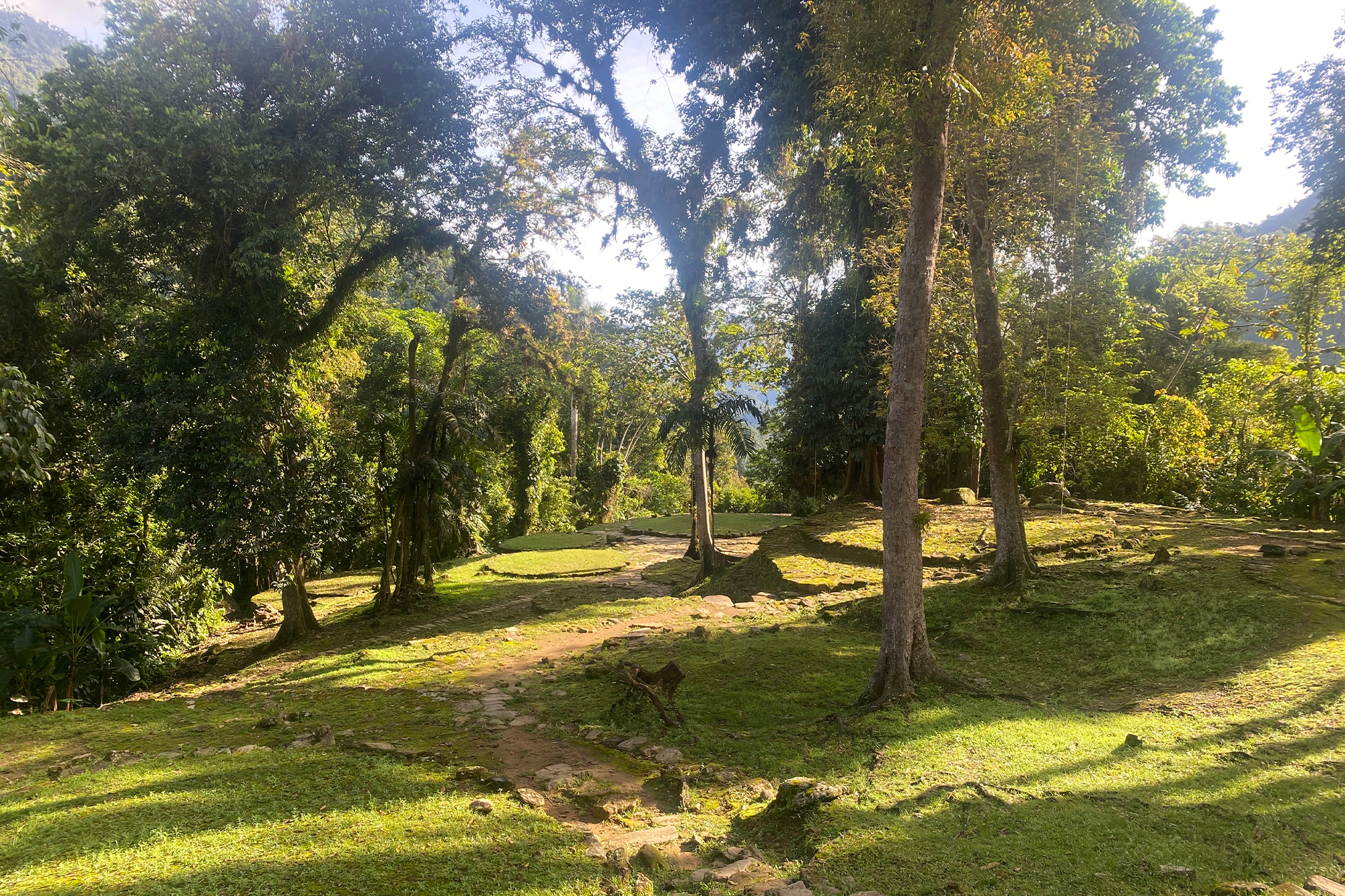
The Sierra Nevada de Santa Marta mountain range boasts two seasons: wet and dry. Those alternate every 3 months.
According to our guide, the very best time to hike in the area is from January to March, during the first dry season.
The second dry season is from July to August. We did the hike in early July and were very lucky to have only caught a bit of the rain while hiking. There were plenty of storms, often occurring at night when we were snug in our bunk beds under mosquito netting.
November and December tend to be the rainiest months.
Ciudad Perdida is a holy site to the four Indigenous tribes that call the Sierra Nevada de Santa Marta mountains home. The Mamos (tribal elders/shamans) from each of the Wiwa, Koguls, Kankuamos, and Arhuacos people close Ciudad Perdida every September to hold spiritual rituals and cleanse the site after 11 months of daily tourist visits.
Challenges & Recommendations
The trail itself isn’t what most North American hikers are normally exposed to. Rather, it crosses rivers and streams and features disorienting altitude gains and descents. Rocks, boulders, rain-soaked channels through mud, sand, and dirt, not to mention a fair share of donkey dung, line the way up the mountain. The climate zones range from tropical rain forests to high alpine environmnets in the Sierra Nevada de Santa Marta mountains.
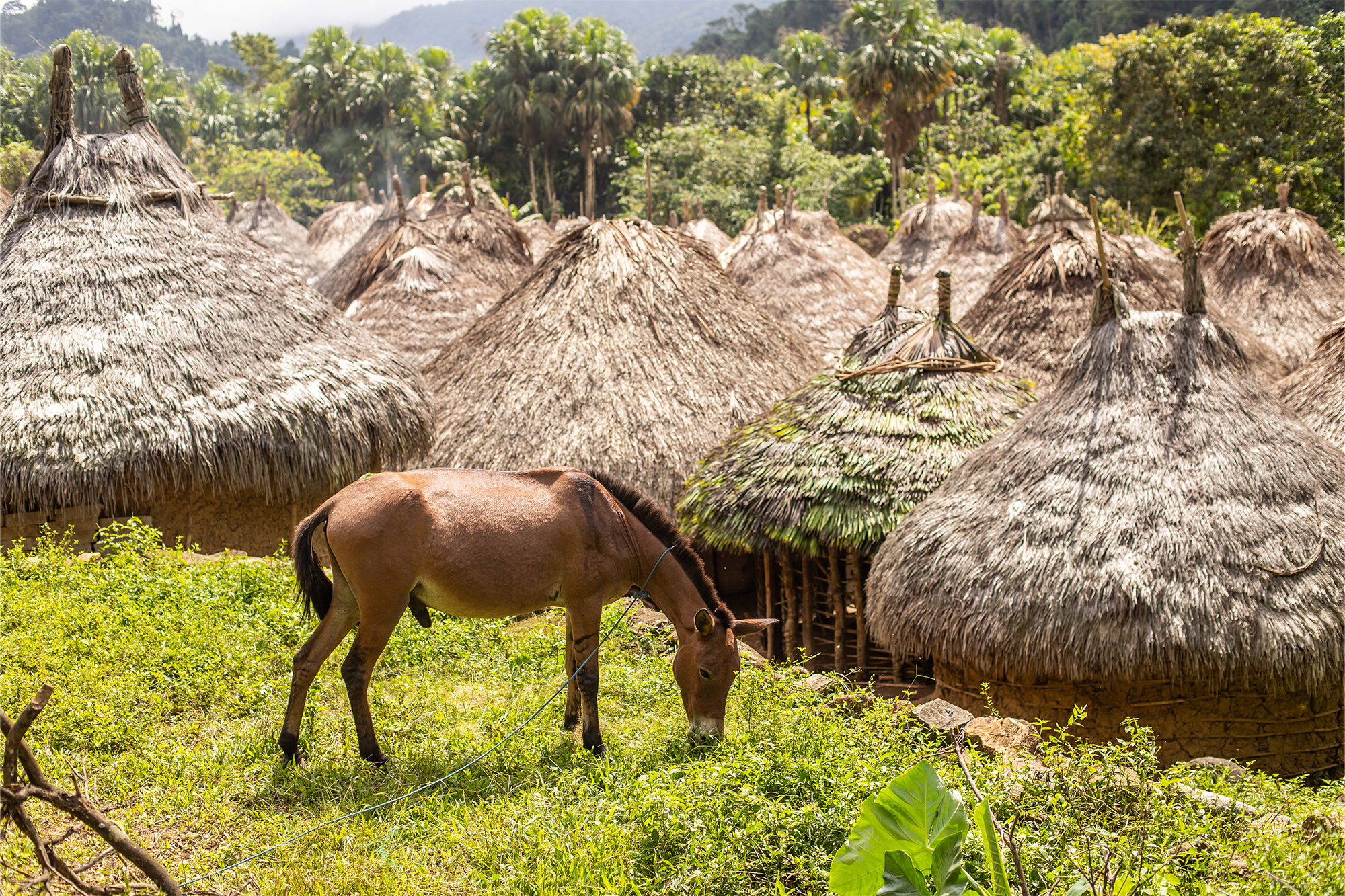
This hike is legitimately challenging. I love hiking, yet my typical half-day weekend warrior jaunts in the woods didn’t prepare me for the climb up and back down from Ciudad Perdida. Our guide strongly recommended that folks spend a month or two training, ideally by hiking steep uphills and carrying a weighted pack.
My elevated level of fitness from four-times-a-week gym workouts helped enormously with the climbs. Although, my ancient soccer ACL injury slowed my descent to the point where I was always the last in our group. Adventurers will be well served to notch a few full-day training hikes (preferably including elevation gain) prior to their arrival in Colombia.
Bringing the Family
In some ways, I am glad I didn’t know how hard the Ciudad Perdida trek would be because then I would have thought twice about bringing our 12-year-old son. Of all the hikers we traveled with, he was the only person under 22 years old. Trekking companies won’t allow anyone under 12 on the tour. He is an athlete and has been hiking his whole life, though, and did great.
The shared experience of the demanding trek bonded our family like never before. We travel together frequently but usually don’t engage in such physically rigorous activities. The combination of being in Colombia and hiking forged some very strong family connections.
Watching my 12-year-old take to the trail and hike with vigor and confidence may be the very best part of our experience. Hiking to Ciudad Perdida felt like a transformational rite of passage for him.
Itinerary Description: 4 Days, 3 Nights, Trekking to Ciudad Perdida
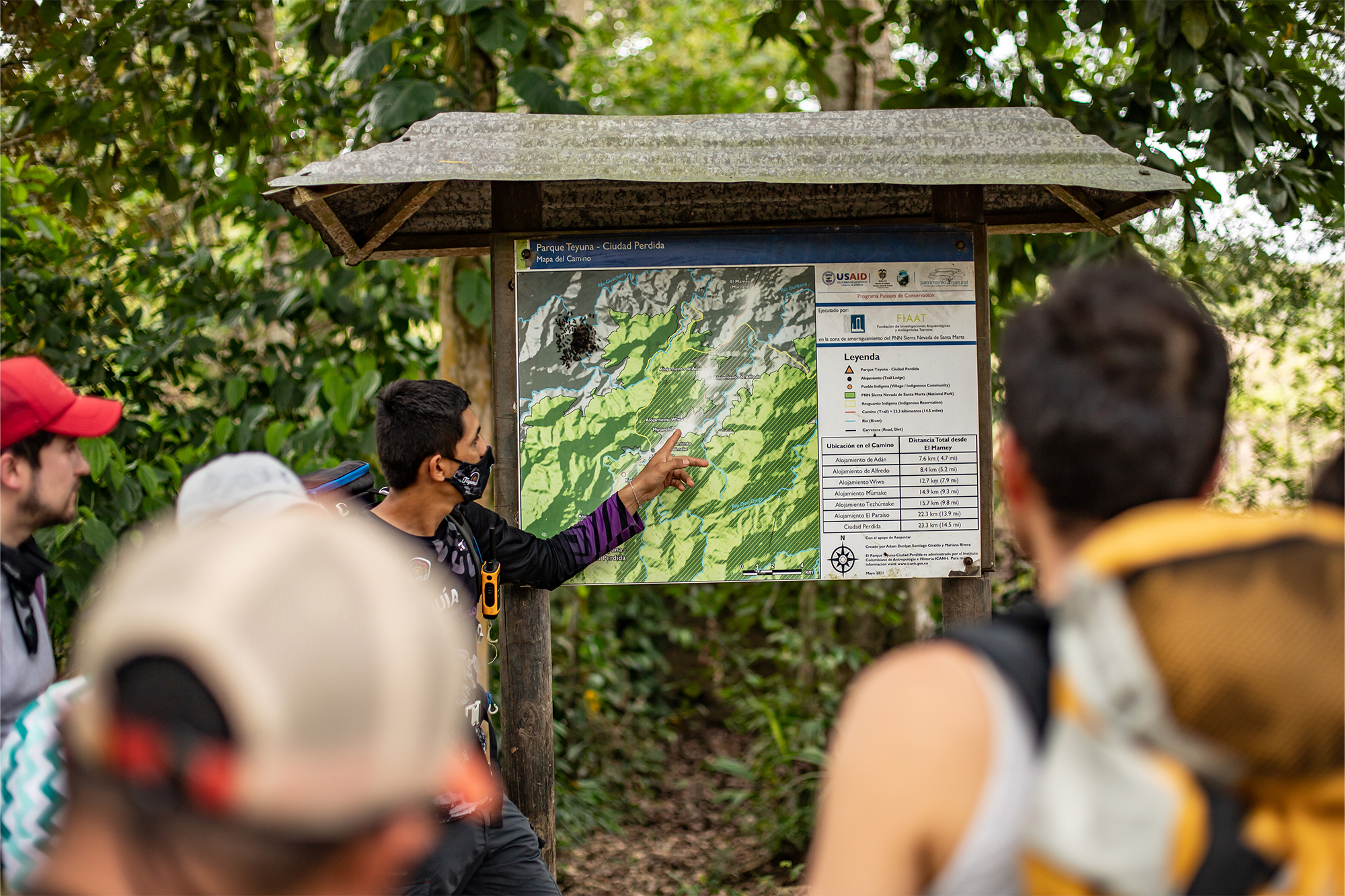
Day One
A driver picked us up from our hotel early in the morning on our first day. He drove us to the Santa Marta offices of Teyuna Tours. Guides broke all present parties up into three different groups. Then we set off in vans for the 2-hour journey to the town of El Mamey.
We were treated to a delicious lunch and then set off on the trail. That first half-day hike was riddled with anxiety about the passing hurricane. Luckily, it passed without significant daytime rainfall. We were able to swim each afternoon of the trek. The cool dip into the river after hiking each day was a welcome relief to wash away the sweat and grime.
Just the week before, hikers had had constant rain and trails of muddy rivers. Even in late June, the rainy season can hold on in this geographic area. Most of our hike was either in a light mist or sunshine. The trail was (thankfully) mostly solid.
The 4-day/3-night trek starts with just half a day of actual hiking. It was 4 hours on the trail, more or less straight uphill, gaining over 1,300 feet in elevation to the peak. At the top there was a small kiosk run by a local family with a plate of watermelon waiting for us.
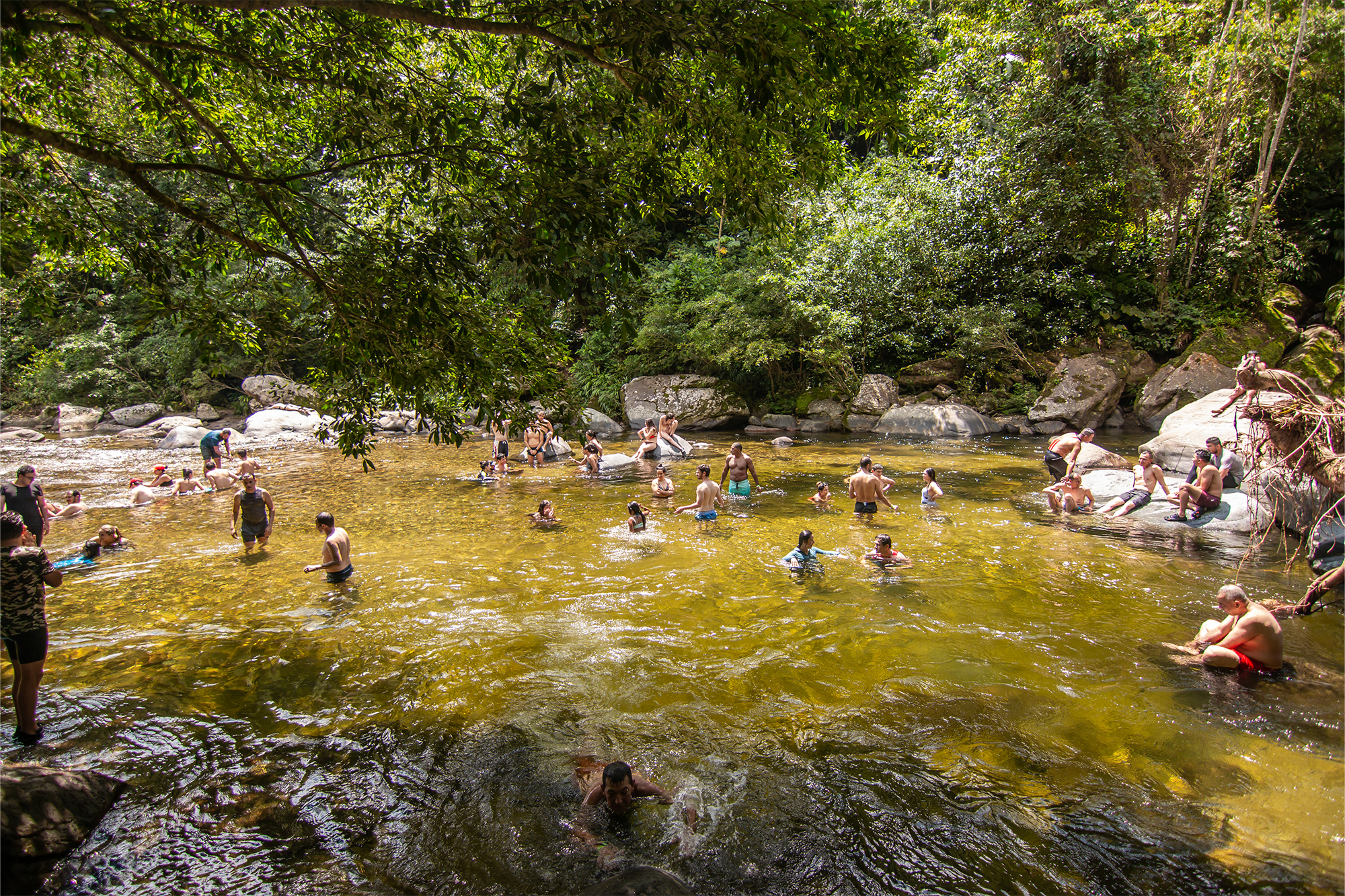
Teyuna Tours and the other companies support the local economy by purchasing fruit and other treats from the indigenous families who live along the trail for their hikers. At the midway point every morning and afternoon, we stopped for a fruit snack. Sometimes watermelon, sometimes mango, and there was always beer and soda for purchase along with handicrafts.
There was still an hour of hiking left that day. The last half mile was straight downhill, 300+ feet, until we reached Adan Camp. There, we quickly jumped back into our wet bathing suits to cool off in the Buritaca River.
We drank coffee, tea, and hot chocolate, played cards with our fellow hikers, and then dinner was served. The meals were simple, plentiful, and delicious: rice, beans or lentils, grilled fish or chicken, and a starch (like fried plantains, French fries, or fried yucca).
The chefs cooked for everyone who was at the camp, no matter which of the seven companies were guiding them on the trail. During our visit, there were 80 hikers from the seven different tour agencies and no fewer than a dozen guides and interpreters.
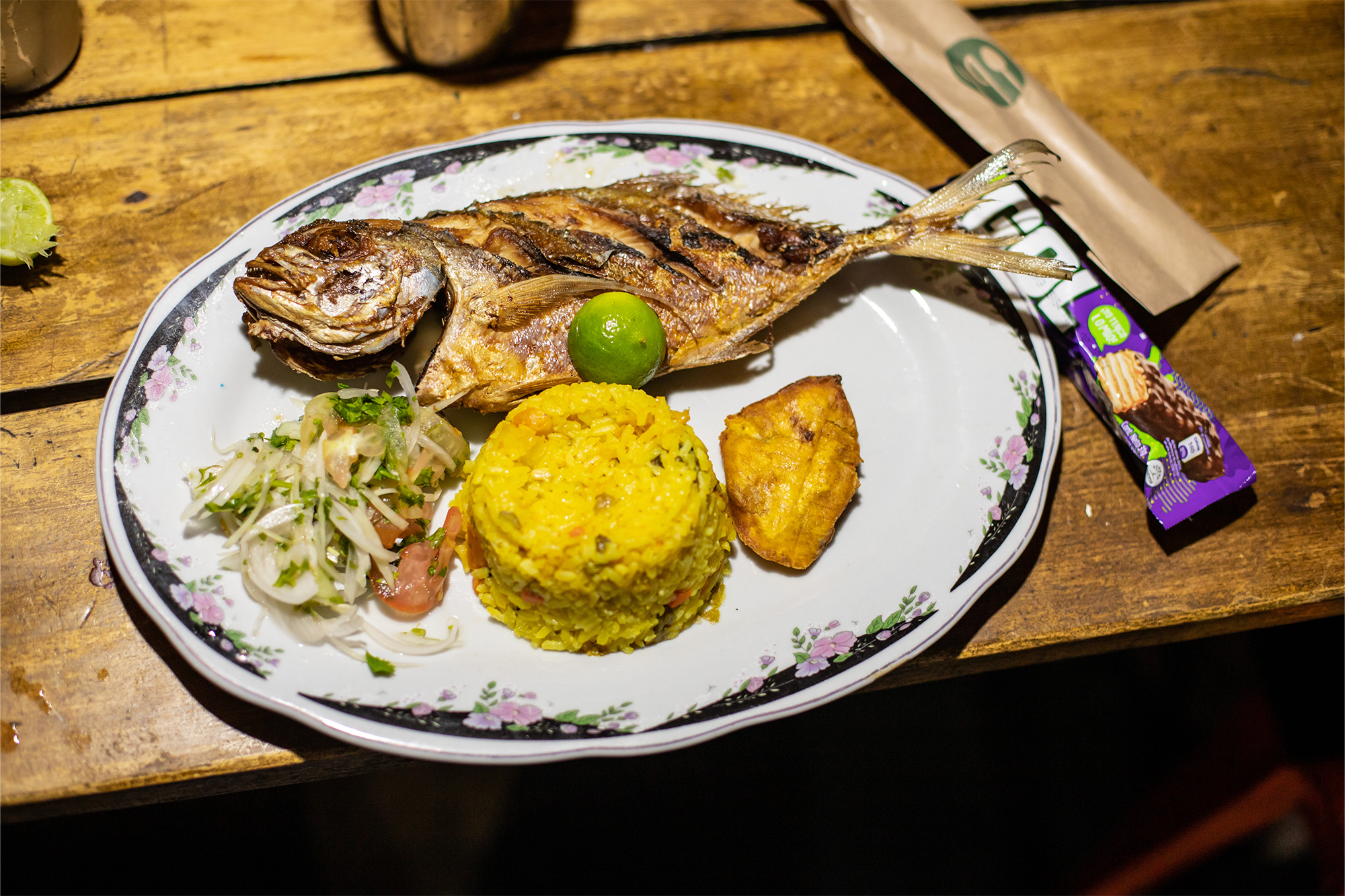
The folks who run the camp spent most of the afternoon working to get a TV signal so the temporary community could watch the Colombian national team play Brazil. Soccer has a fevered religious following in Colombia, so watching the national team play that night with our guides and the chefs was a thrill.
Day Two
Our guide woke us up before dawn on the second day. We got dressed, doused ourselves in mosquito repellent and sunscreen, and made our way to the breakfast table. Hot coffee or chocolate, juice, eggs, arepas (Colombian corn cakes), and fruit were waiting for us. Within 45 minutes of our wakeup call, we were back on the trail.
That morning featured small elevation gains and descents. Our interpreter called them “Colombian flats.” The path followed the ridge line, up to Mono Pecas and finally to Mumake Camp, where we would stop for lunch.
The second and last days are both over 10.5 miles. We crossed streams and valleys, passing by Wiwa communities with their circular thatched-roof homes clustered together close to the river. The forests were dense, and occasionally, we were treated to viewpoints of the cloud-shrouded adjacent peaks.
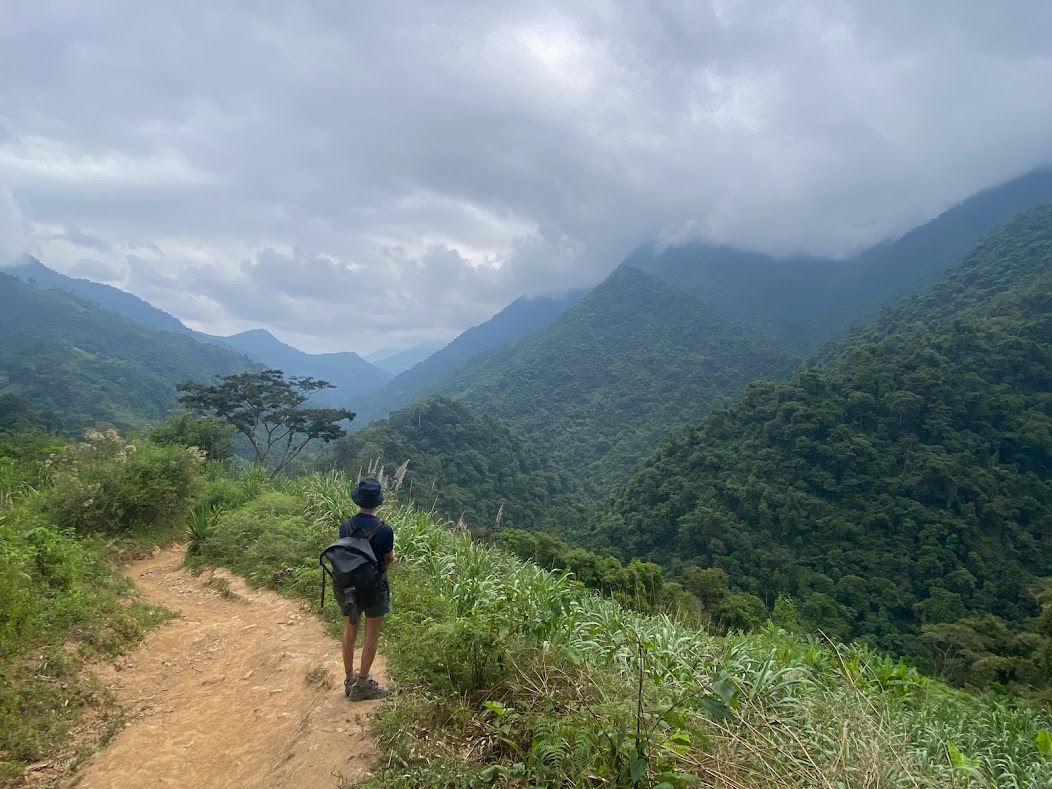
At Mumake Camp we stopped, swam, and ate a chicken stew, rice, and crispy yucca fries. Our guides encouraged us to leave any extraneous things in our packs at Mumake Camp because we would return there the following evening for our last night on the trail.
I was grateful for the lighter pack. After lunch we tackled the brutal ascent affectionately known as “Happy Hour.” At times the trail was nearly vertical, quickly rising over 1,300 feet. We all savored the watermelon reward at the top of Happy Hour, and then descended through the grassy valleys to Camp Lorenzo, our stop for the night.
Hiking to Ciudad Perdida does include accommodations, and there is really nothing luxurious about it. Camp Lorenzo features two long lines of bunk beds facing each other. Laundry lines are set up in the space between. All of our things were either wet with rain or sweat or both, and all 80 hikers were drying out gear together. So the sleeping area smelled like a funky jungle locker room.
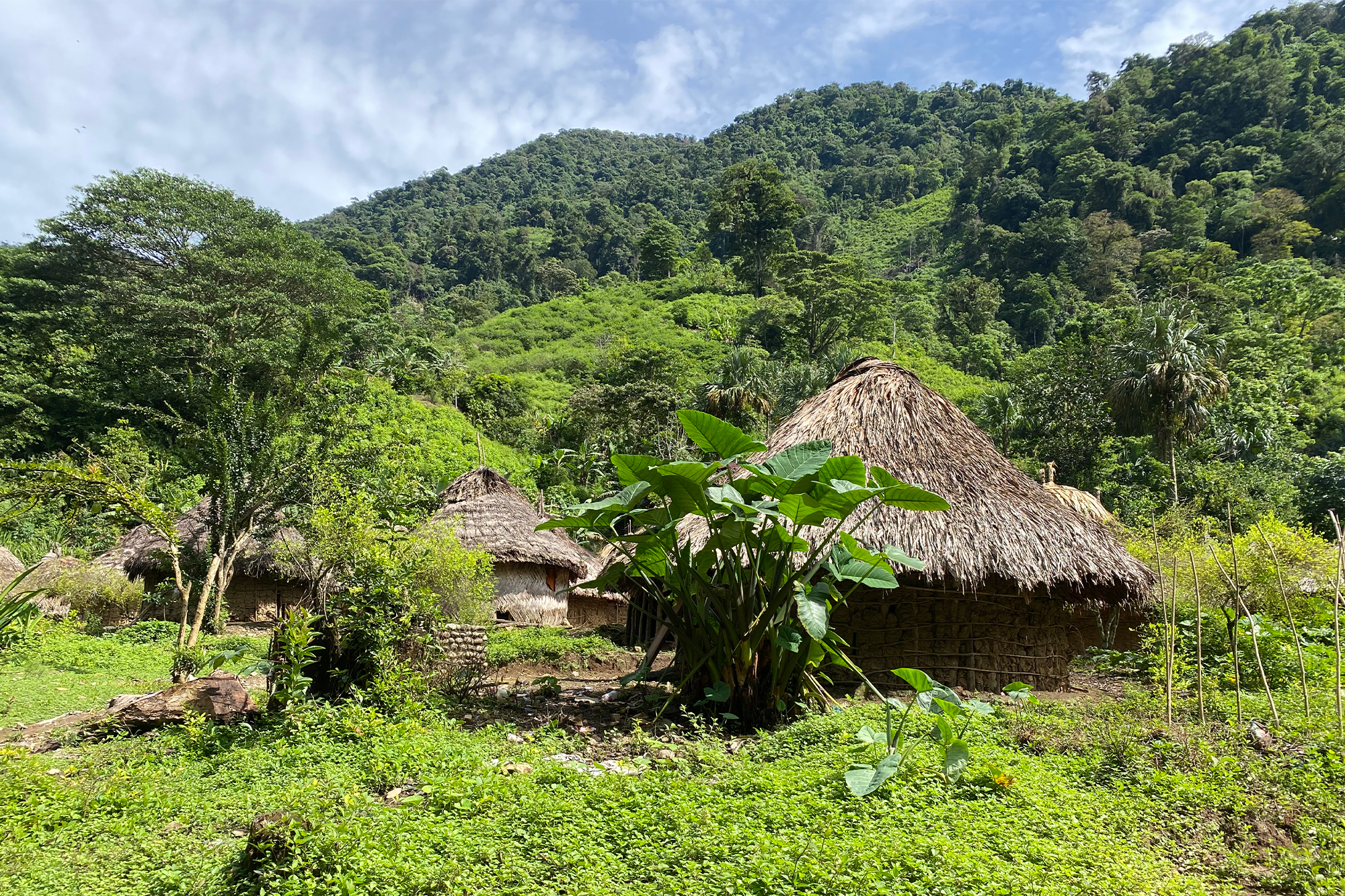
Day Three (Ciudad Perdida Day)
Our pre-dawn wakeup call snapped us to attention. This was the day we were going to see Ciudad Perdida, the Lost City.
After another filling camp breakfast, we gathered our things and set off on the short 45-minute hike to the archaeological site. Before 7 a.m., we were climbing the dizzying 1,200 vertical steps up to Ciudad Perdida with the 80 other hikers we had been walking with since the start.
As we hiked, our guides explained that anthropologists believe this site contains over 170 individual terraces. It was once a thriving urban center with anywhere from 1,500 to 3,000 people. Some researchers believe the site could have housed as many as 8,000 people.
The site’s architectural significance is largely centered around the inventive design to manage rainfall on the steeply sloped hillside. The Tayrona people designed a 12-foot retaining wall to prevent erosion and protect the multiple paths that crisscross the city.
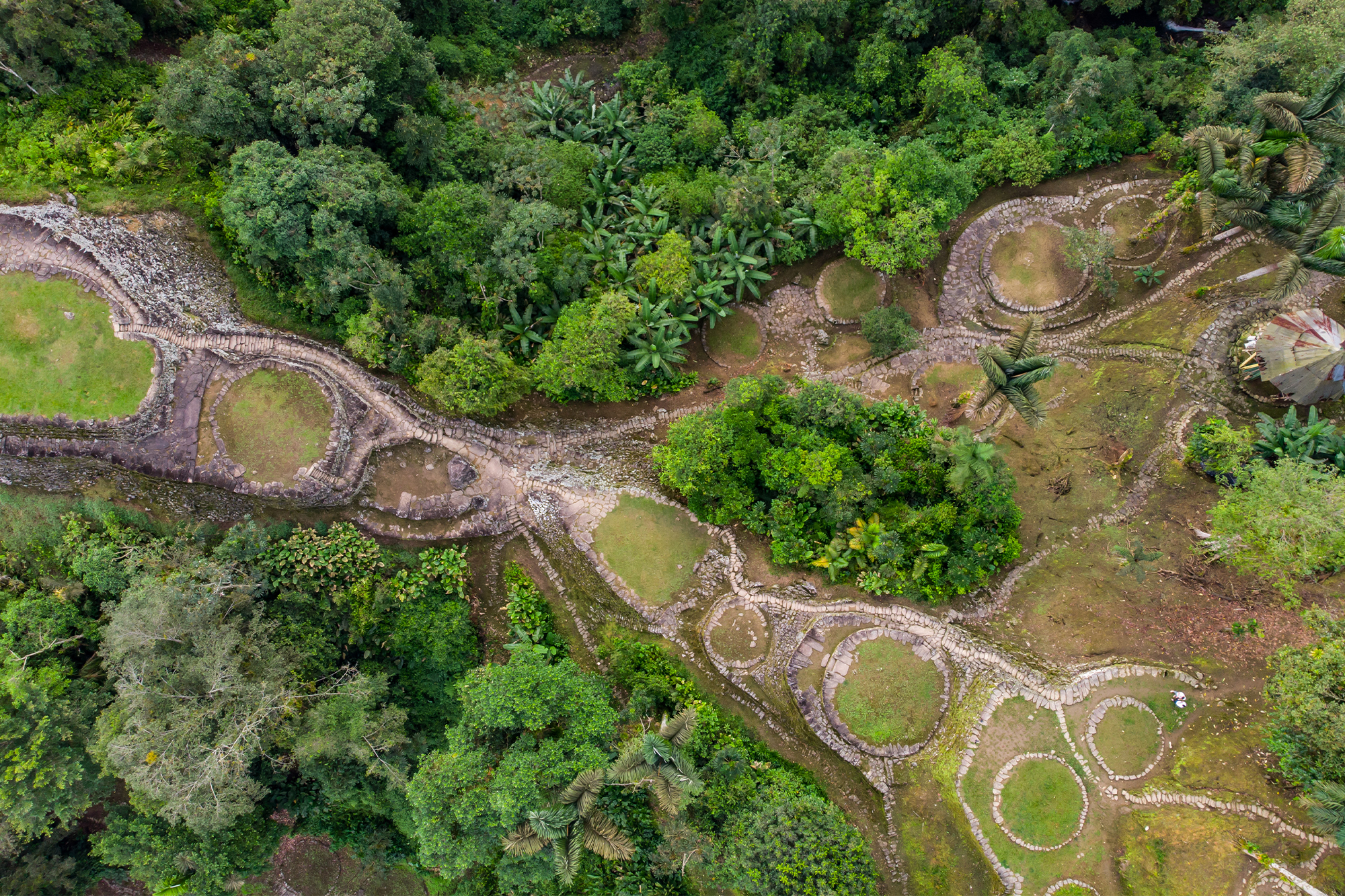
Our group set off in a different direction than the others, and it felt like we were all alone on the 80-acre site. We spent several hours marveling at the engineering of the stonework and enjoying the views from the top of the mountain.
As we moved to the heart of the community, we received a blessing from one of the Wiwa Mamos. With a donation, we each received a bracelet with different colored beads. My bracelet represented the earth, sun, mountains, flowers, and the sky. Later on our trip, we saw this same Mamo in an archival photograph in the Museo de Oro in Bogota.
The very top of the ruins boasts the classic image of Ciudad Perdida: the circular platforms cascading off into the distance, framed by palm trees and mountains. Our guide appeared with a smorgasbord of special treats — cheese, crackers, mango, watermelon, chocolate, and jellies. The well-earned snack helped us soak in the beauty and the pride in our hiking achievement.

After 3½ hours at Ciudad Perdida, it was time to start the long walk back. The rest of the third day was a lengthy 2,300-foot descent. We passed Lorenzo Camp, where we had slept that night, making our way down to Mumake Camp, where we’d left some of our belongings on day two.
Day Four
The last 17-plus km we hiked on day four are a blur of a pounding downhill slog. As brutal as Happy Hour had felt on Day Two, for me walking back down felt even harder.
The last day was cool, a relief from walking in the bright tropical sunshine. The rain started slowly and then picked up bit by bit as we descended off the mountain. The last 45 minutes we were walking in a complete downpour.
By the time we arrived in the town of El Mamey, we were soaked, tired, and happy.
The Final Word: Why Hike to Ciudad Perdida?
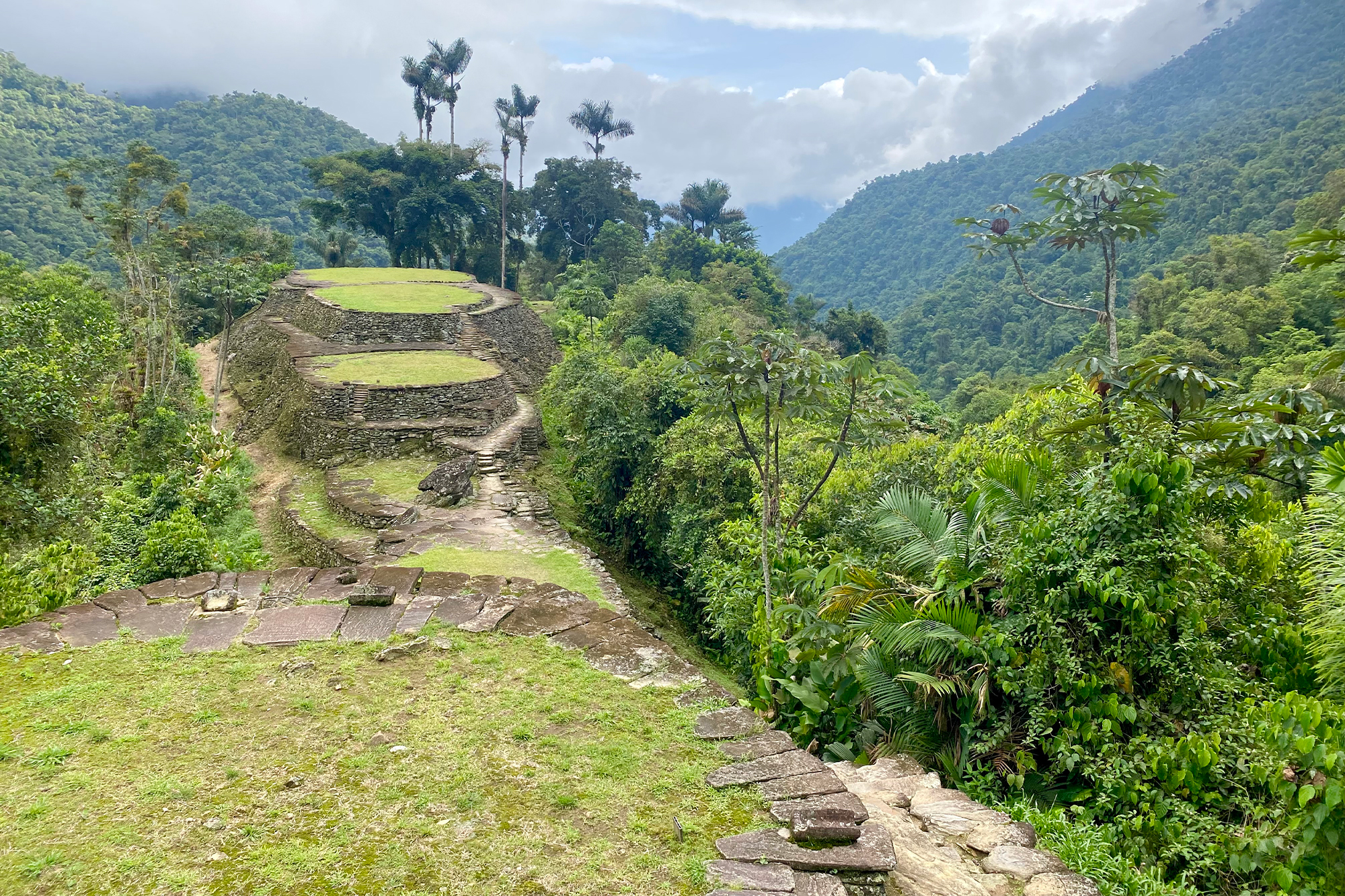
The sense of accomplishment I felt climbing through the Sierra Nevada de Santa Marta with the bugs and the heat and surrounded by the stunning Colombian natural beauty is something I won’t soon forget.
Yes, the hike was hard. But it was the challenge that makes the memory of it even sweeter.
As many archaeological sites around the globe become their own version of Disneyland, the persistence and time needed to reach Ciudad Perdida make the effort more than worthwhile. But the site is really almost an excuse. The real achievement of the trek to Ciudad Perdida is the journey to get there.
